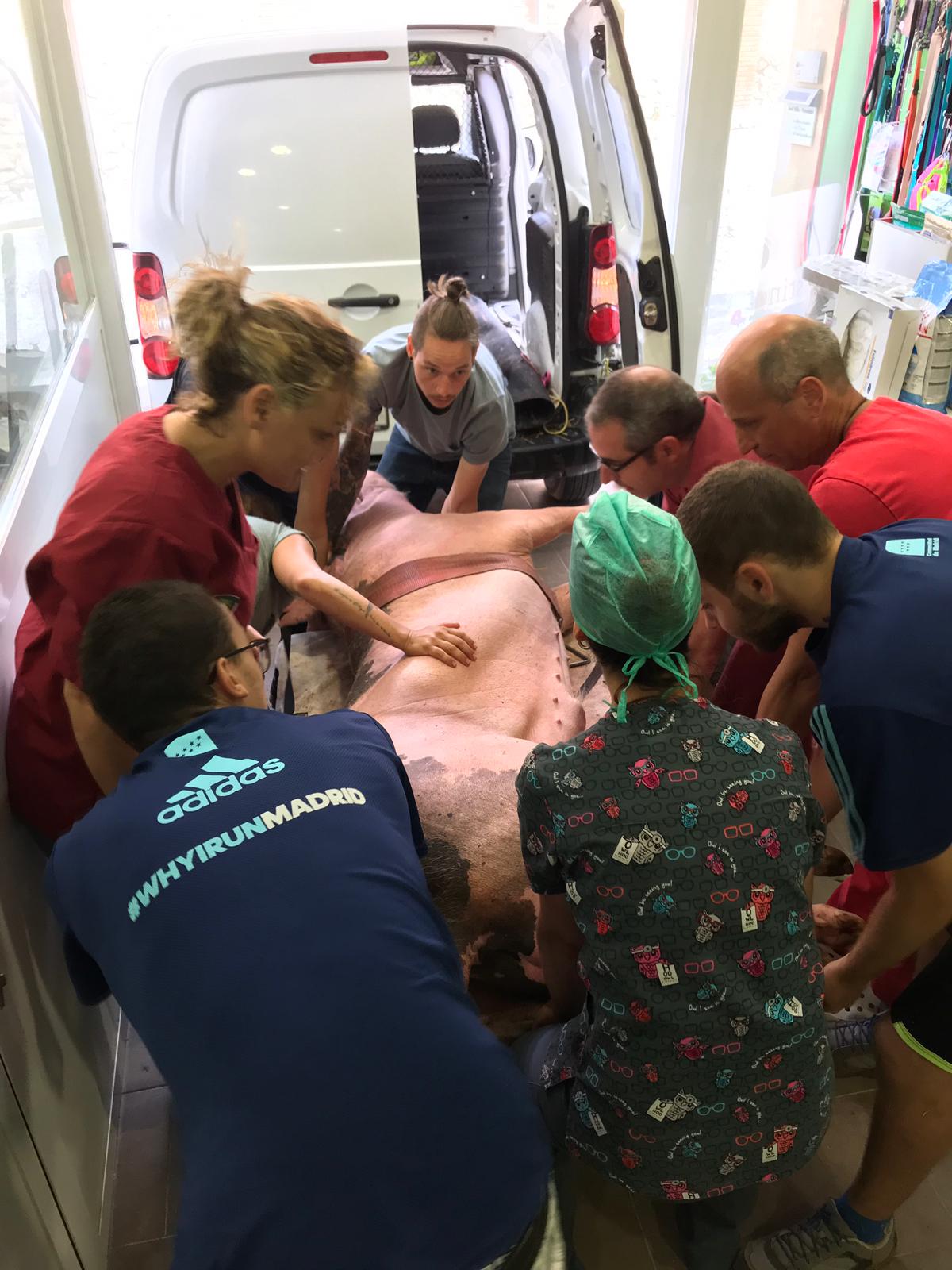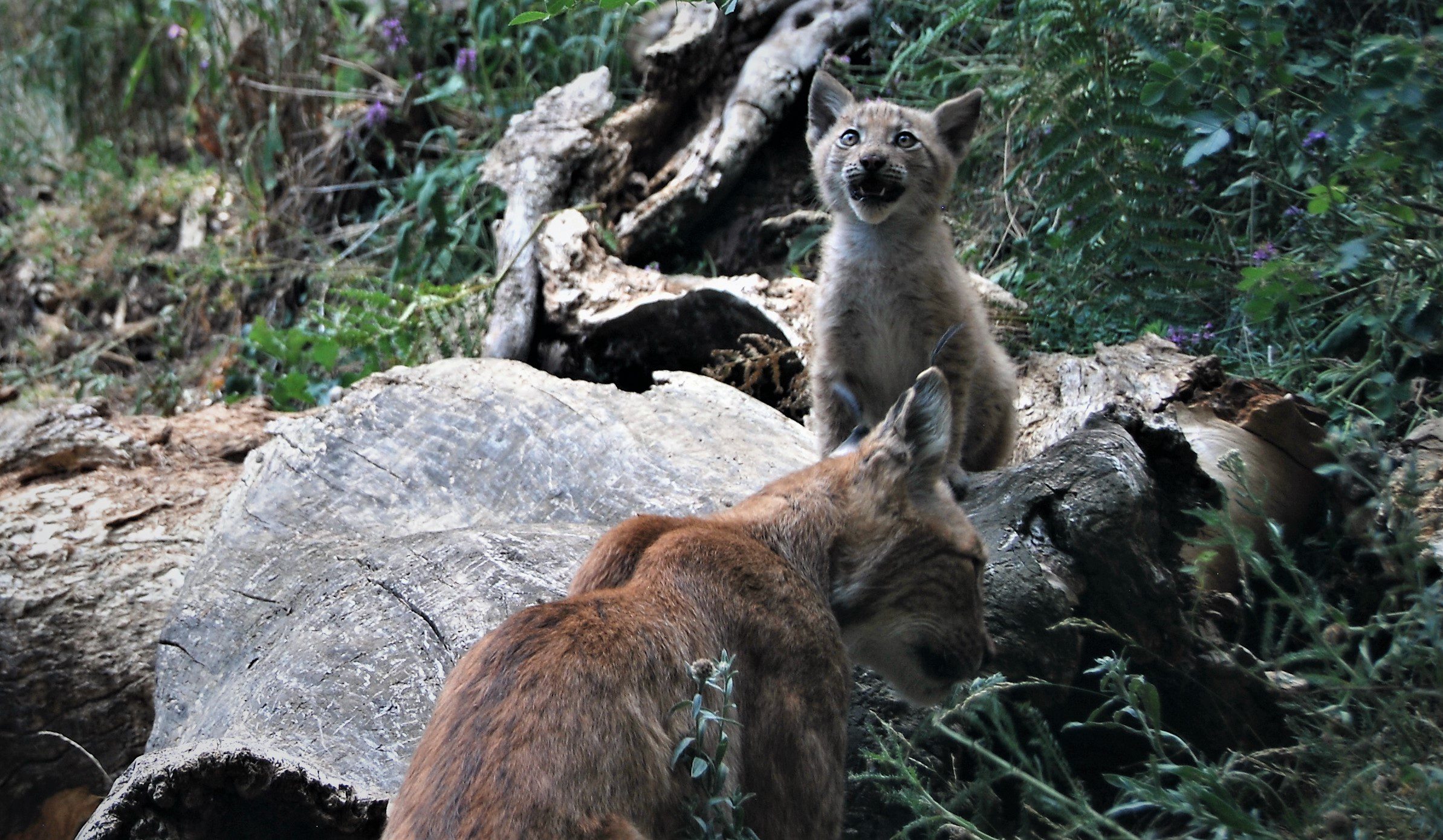Sweltering summer months are getting closer, beach season is just about to start and you will realize that unfortunately most of Catalonia´s beaches do not allow your dog to accompany you. However, there are beaches in Barcelona, Tarragona, and Girona you can go to and here you´ll find them!
Many coastal communities prohibit their access to the beachfront in order, referring to their regulations, to avoid disturbing other bathers. Well, as we know better, it is not like that…but as we cannot change that, we found it as being useful to create a guide for beaches to escape to together with your dog. In addition, we collected you 10 basic guidelines to enjoy your day at the beach without any bad surprises.
Several campaigns have been risen to convince the communities that the human’s best companion needs to have a bath as well not less than having a good run, and playing in the sand. Sadly, it still remains a lot of work. Barcelona´s urban part already did an important step by inaugurating the beach Levante, exclusively arranged for the doggie´s joy.
The debate keeps open, as in some communities´ statement the bather´s dogs may generate problems or messing up the beach. In general, public law prohibits the access to any beach but in reality, every community can regulate this law individually.
Before identifying the beaches where you can go to and where not, on the part of animalados.com we analysed the instructions that apply to the different Catalan beaches and divided them in three groups:
- The tolerant ones…
…are those who permit the access of dogs without any restrictions (acting on the assumption that the dog is vaccinated, registered, and is not disturbing other bathers). In this part, we also included those beaches that legally do not accept dogs but where other visitors and the community, at least by now, usually tolerate them and is not penalizing.
- The limited ones…
…allow dogs with specific restrictions (especially during summer season).
- The forbidden ones…
…do not accept dogs by no means. In that case, we always recommend to look up for each beach individually right before going there as those norms can change. Luckily, you can notice an upward trend to more and more dog friendly places! So please, if you come across one of them, keep us updated and send it to us via info@animalados.com :)
-
Tolerant beaches accepting dogs
Area Girona (Costa Brava)
Castelló d’Empúries. Platja de la Rubina
It is the first beach of whole Spain that gave access to dogs, which they can be proud of and to that effect, communities kept asking how they managed it and tried to copy their concept. The arranged place to bath and walk our pets is delimited and by now there aren´t any bad news about misunderstandings between bathers and dog owners. Not the whole beach permits the access, only the left part, that is situated more north (direction Roses).
How to get there?
This beach can be reached by car only and to do that, you need to enter Empuriabrava, crossing the first roundabout, and driving until the second roundabout (next to the communities’ aero club). Keep straight until the end of the road and when the asphalt finishes you can already spot the parking lot.
L’Estartit. Zona de els Griells
The city hall of Torroella de Montgrí has also been one of the pioneers of dedicating a part of their beach to the joy of animals. As the place is treated as a natural reserve, the community had to propose different changes in their initial layout to point out a precise area of 900 square metres. It is marked by sticks and cords. Dogs do not need to be registered in their community but have to stay on the leash all the time (even when bathing). This beach is directly located in front of the “El Molino” camping, between the urbanization of Los Girells and Pletera.
IMPORTANT: The municipality is increasing the controls to an extreme during bathing season. If your dog is un-leashed within the reserved space or you don’t pick up the excrement, they will fine you!
Just a small fact: This new space replaces the one they opened about 4 years ago in Pletera, but that couldn’t be kept alive due to being qualified as a part of the natural reserve area opened in 2010. On the part of the consistory of Girona they explained that “some of the dogs are walking in the sand dune zones and damage the eggs of protected birds”. Hopefully the new space will be kept open.
Playa del Rex del Molí. L’Escala.
This beach can be find just a few minutes away from l’Escala and stretches itself about 370 metres with fine sand and a calm sea. Although until 2017 bathers have exclusively used it, this well singed part is now open for dogs.
It is one of the examples that has been enforced by the increasing demand of dog owners.
Playa de las Barcas. Colera.
Since 2018, this small and peaceful beach in Colera (close to the French border) has its norms that allow dogs to join their owners. It is a small place next to the fisherman´s port and is characterized by a gravel and gritty ground, which makes it perfect for the doggies to run and play around.
Area Barcelona
Barcelona. Playa de Llevant
Finally, the Catalan capital opened a doggy friendly beach. It is the one called Llevant, located in the northern part of Barcelona in front of the Diagonal shopping centre. It covers about 1,250 square metres and is limited to 100 dogs at the same time for security reasons. The beach also comes with fenced parts along the water and wave-breakers to prevent the dogs to escape. You can access the location everyday between 10:30h and 19:00h.
This beach will probably stay forever, after that the municipality admitted to its respect for the environment. It is pretty well equipped, you will find showers (for both of you of course), watering places and urinals to not polluting the place too much.
At the entrance there are usually two assistants who sporadically do checks about registration with microchip, vaccination and muzzles for the PPP breeds (breeds potentially dangerous) – so be prepared! However, they also hand out plastic bags for excrement and give information about regulations.
Llevant´s beach especially sticks out due to his cleanness! On the one hand, it gets manually cleaned by emptying the bins and on the other hand by a tractor going through the place every night-shift to grade the sand. Above that and every now and then they do check the quality of the water and sand to assure the well-being of the animals.
Sitges, Cala Vallcarca
Another small beach accessible by dogs all year around is located between Sitges and Castelldefels. It measures about 60 x 15 metres, characterized by the finest sand, and protected of waves by banks. People enjoy heading here because of its location next to a shady forest, so it makes it easy to fill up a joyful and relaxing walk for both of them. The applicable regulations are, as usually, papers of registration, and vaccination as well as to respect everyone’s space in a shared area.
How to get there?
The best option is to go by car, always following the road C-31, a small parking lot is available. You can find two more beaches in Sitges (Grills and Las Botigues) with people enjoying a bath with their dogs, although it is officially not allowed. However, as long as the dog doesn´t provoke any problems, you won´t get fined. Those beaches are in the municipality of Sitges and tend to be more beautiful than Vallcarca.
Cubelles, Playa de les Salines
This doggie beach can be found in the centre of Cubelles, located next to the thermal power station since 2015. It stretches about 45 sq. of finest sand. It is treated a free, semi-wild space to use so you won´t find any special equipment like watering stations, etc., however it is free of any barriers, so that our friend can run and play around without any physical or time restrictions.
Just be aware of the basic norms:
- Make sure to have your dog micro shipped, registered and vaccinated
- Keep interactions with other dogs under control
- Collect excrements
- Wear a muzzle for PPP dogs.
Arenys de Mar, playa del Cavaió
In one part of the beach of Arenys de Mar at the outskirts of Canet de Mar dogs are allowed in the bathing season (1st of July until 16th of September).
Unfortunately only local dogs, registered in the municipality of Arenys are allowed to access to the local beach. At all other beaches, dogs can access all seasons with respect to the summer time that goes only between 8pm and 8 am.
Playa de Pineda de Mar
The town hall of Pineda de Mar announced in June 2017 that from now on dogs are free to use an area of the central beach in C/ Marina and C/ Tarongers. The place is situated (about 100 sq.) between Poblenou and la Riera and amongst two camping sites.
This area is fenced and well signed and disposes some running meters for the joy of both, humans and their furry friends. It is open 365 days without timely restrictions. Nevertheless, it is necessary to follow their bit more detailed rules:
- Collecting excrement, pouring water over pee
- Don´t use the public showers
- Registration and microchip and some badge on their collar including name and phone number of the owner
- Muzzle for PPP´s and only one PPP per person is allowed
- Keep the dog on a leash that is not longer than two meters
- Don’t give the dog in responsibility of people under 16 years
Area Tarragona
Alcanar. La Platjola
The municipality of Alcanar keeps his ´star´ of the beach open to all animal lovers. With 300 metres of footage and almost 15 metres amplitude, it is one of the best options for people living in and around Alcanar. Also for everyone who is up for a ride, as there are no access restrictions. It is also called to be a virgin place with unchanged natural appearance, which makes it the perfect get-away to enjoy nature and swimming close to Barcelona.
It is one of the last dog-friendly Catalan beaches. Recently, dogs are not allowed in summer months but in October last year the town hall of Cambrils decided to veto. This wouldn´t have been possible since the support of all citizens, collecting around 413 signatures and the veto got approved concordantly. The municipal council of Service, Environment and Public Work, Antonio Laguna, explained the treatment like a pilot phase and if it works well, they are going to extend it to other beaches as well.
How to get there?
In car:
Is the easiest option. Take the AP-7 until exit 41 to change to N-340. Once there, just look out for Passeo San Juan Bautista Lasalle until the side road of Riera de Alforja. The doggy part is down there on your right hand.
You can also reach the place by public transport. Take the train until Cambrils and walk down about six blocks. Don´t forget the riding conditions for dogs in RENFE!
Ametlla de Mar. Cala Bon Caponet
A small beach and according to the bathers it is not always clean. However, dogs are allowed all year round.
How to reach?
You need to get through the residential area of las Roques Daurades about 500 metres from the municipality, so walking is easy. You can also find the beach of Cementeri, where dogs officially are not permitted but you always meet some of them and the human guests seem to be tolerant.
Delta del Ebro. Bassa de l’Arena
Yes, this nice place permits dogs all year round. La Bassa de la Arena is an extensive beach of 500 metres exclusively for dogs. Delta del Ebro is well known for really fine Sandy beaches and moderate sea.
Surely, you cannot expect any type of service here, so be well prepared with everything you need for a pleasant day outside with your favourite companion.
How to reach?
By car. Coming from Deltebre to Riumar you will be crossing a roundabout with signs directing to la Balsa de la Arena, just follow their instructions.
Within the radius of Tarragona are two more beaches where many people go with their dogs and the police usually doens´t penalize and you do not hear about problems with other guests. Those beaches are Eucalipto in Amposta, and la Cala del Trabucador in Sant Carles de Ràpita. Nevertheless, keep in mind, that officially dogs are not allowed.
Cala del Cementiri. Ametlla de Mar
This small beach of not more than 20 metres is a calm place to go. Unfortunately, its rocky terrain makes it more complicated to reach for dogs that are not physically prepared. On the other hand, it can be a nice walk indeed!
You will find this spot some kilometres away from la Ametlla de Mar and it is likewise recommend to be prepared as there isn´t any service.
Playa de la Riera d’Alforja. Cambrils
The town hall of Cambrils gave access to this beach for dogs in 2016 directly laying on the side road of Riera d’Alforja. Well known for its rough and stony sand it makes the perfect racetrack for our furry friends.
This season some nice features have been added like dog showers and the delimitation with wooden sticks eliminating those dangerous tracing pegs.
VILANOVA I LA GELTRÚ
Until the 15th of May 2015, this nudist beach accepted dogs accompanied by a pilot project. However, thanks to complaints by the bathers, the town hall of Vilanova moved backwards and is trying to find another place. By now, people going to that beach with their dog are being penalized.
EL PRAT DE LLOBREGAT
Forbidden between the 1st of May and the 31st of September.
GAVÀ
Forbidden between the 9th of June and the 15th of September.
VILADECANS
The beach of Murtra and Pinar stays impassable since the 1st of April until the 30th of September.
SANT ADRIÀ
Forbidden between the 15th of May and the 30th of September.
BADALONA
Dogs are not allowed between the 1st of June until the 1st of September.
MONTGAT
Forbidden between the 1st of June and the 31st of September.
MASNOU
Forbidden between the 1st of Abril and the 30th of September.
PREMIÀ DE MAR
Forbidden between the 1st of Abril and the 4th of November.
CABRERA DE MAR
Forbidden between the 1st of May and the 30th of September.
MATARÓ
Access denied between the 1st of May and the 30th of September.
SANT ANDREU DE LLAVANERES
No access between the 1st of Abril and the 31st of October.
SANT POL DE MAR
This place established a doggie beach within the scope of a pilot project in summer 2016. Since summer 2018 the municipality decided to put it down again as it got too crowded. On top of that, they blame the doggies that many kinds of birds are in danger now to become extinct.
CALELLA
Forbidden between the 1st of May and the 31st of October.
SANTA SUSANNA
Forbidden between the 1st of Abril and the 31st of October.
MALGRAT DE MAR
Forbidden between the 1st of Abril and the 31st of October.
TARRAGONA
Dogs are not allowed between the 1st of Abril and the 15th of October.
PALS
Here you can access outside the season of 15th of March until 15th of October.
2) Forbidden beaches
LES BANYERETES (SANT POL DE MAR)
After the town hall of Les Banyeretes gave access to the four-legged companions in June 2016, in September the department of the environment decided that the presence of dogs might affect the colony of the feathered cormorant who use the rocky coast to sleep. From that moment, the department forbid dogs all year round because those cormorants count as being protected for danger of extinction and they need calm places.
CALDES D’ESTRAC
No access for dogs year-round.
CANET DE MAR
No access for dogs year-round.
CASTELLDEFELS
No dogs unleashed all-season.
LLORET DE MAR
No access for dogs year-round.
SANT VICENÇ DE MONTALT
No access for dogs year-round.
VILASSAR DE MAR
No access for dogs year-round.
BLANES
To respond to the constant petition of the bathers, the beach of Blanes do not give access to our furry friends within all-season.
After all, until here we prepared our guide for beaches to go to in Catalonia. We hope it turns out to be useful. If you have some missing information or any updates to what we do post here, please let us know via the comments! Thanks a lot :)



